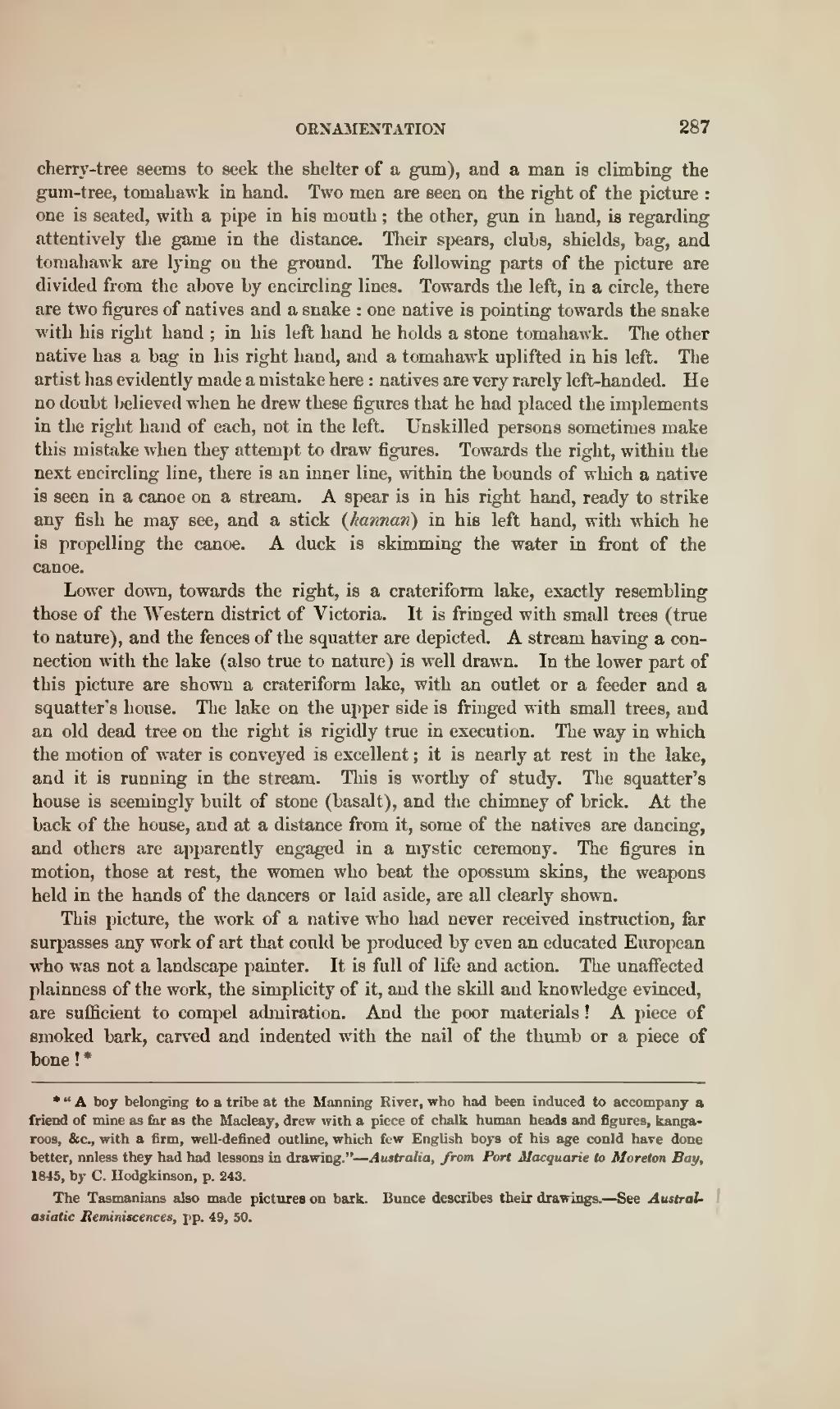cherry-tree seems to seek the shelter of a gum), and a man is climbing the gum-tree, tomahawk in hand. Two men are seen on the right of the picture: one is seated, with a pipe in his mouth; the other, gun in hand, is regarding attentively the game in the distance. Their spears, clubs, shields, bag, and tomahawk are lying on the ground. The following parts of the picture are divided from the above by encircling lines. Towards the left, in a circle, there are two figures of natives and a snake: one native is pointing towards the snake with his right hand; in his left hand he holds a stone tomahawk. The other native has a bag in his right hand, and a tomahawk uplifted in his left. The artist has evidently made a mistake here: natives are very rarely left-handed. He no doubt believed when he drew these figures that he had placed the implements in the right hand of each, not in the left. Unskilled persons sometimes make this mistake when they attempt to draw figures. Towards the right, within the next encircling line, there is an inner line, within the bounds of which a native is seen in a canoe on a stream. A spear is in his right hand, ready to strike any fish he may see, and a stick (kannan) in his left hand, with which he is propelling the canoe. A duck is skimming the water in front of the canoe.
Lower down, towards the right, is a crateriform lake, exactly resembling those of the Western district of Victoria. It is fringed with small trees (true to nature), and the fences of the squatter are depicted. A stream having a connection with the lake (also true to nature) is well drawn. In the lower part of this picture are shown a crateriform lake, with an outlet or a feeder and a squatter's house. The lake on the upper side is fringed with small trees, and an old dead tree on the right is rigidly true in execution. The way in which the motion of water is conveyed is excellent; it is nearly at rest in the lake, and it is running in the stream. This is worthy of study. The squatter's house is seemingly built of stone (basalt), and the chimney of brick. At the back of the house, and at a distance from it, some of the natives are dancing, and others are apparently engaged in a mystic ceremony. The figures in motion, those at rest, the women who beat the opossum skins, the weapons held in the hands of the dancers or laid aside, are all clearly shown.
This picture, the work of a native who had never received instruction, far surpasses any work of art that could be produced by even an educated European who was not a landscape painter. It is full of life and action. The unaffected plainness of the work, the simplicity of it, and the skill and knowledge evinced, are sufficient to compel admiration. And the poor materials! A piece of smoked bark, carved and indented with the nail of the thumb or a piece of bone![1]
- ↑ "A boy belonging to a tribe at the Manning River, who had been induced to accompany a friend of mine as far as the Macleay, drew with a piece of chalk human heads and figures, kangaroos, &c., with a firm, well-defined outline, which few English boys of his age could have done better, unless they had had lessons in drawing."—Australia, from Port Macquarie to Moreton Bay, 1845, by C. Hodgkinson, p. 243.
The Tasmanians also made pictures on bark. Bunce describes their drawings.—See Australasiatic Reminiscences, pp. 49, 50.
